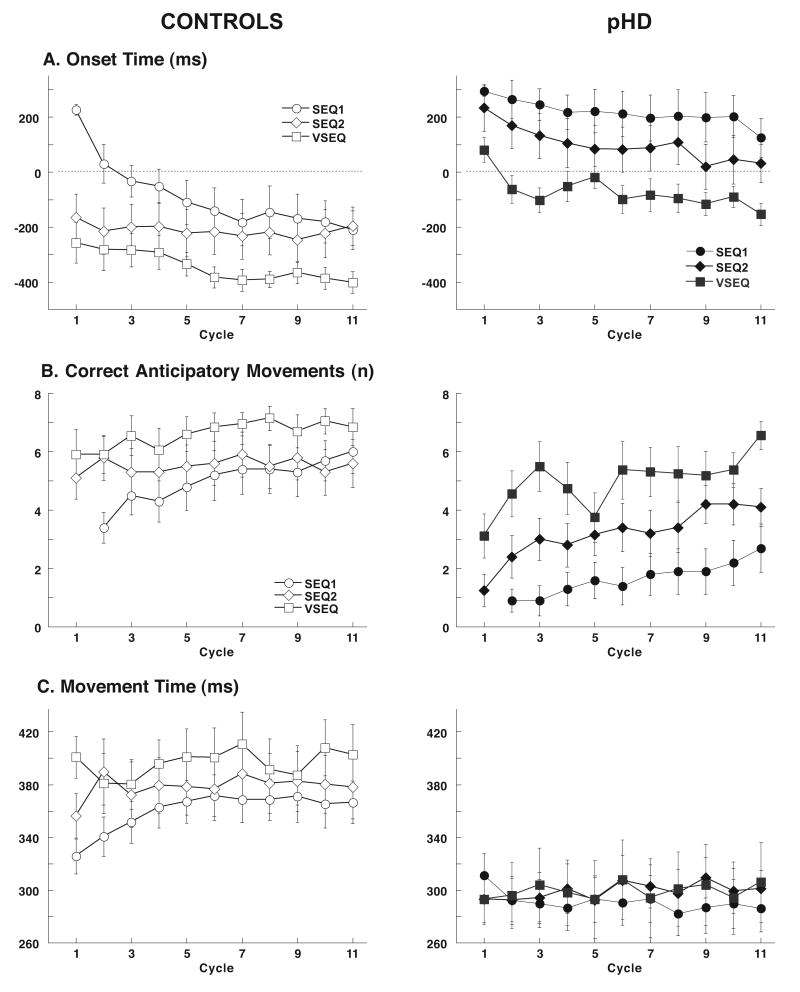Figure 2.
Sequence learning in controls (empty symbols) and pHD (filled symbols). A. Onset time, plotted as a function of movement cycles, significantly decreases in SEQ1 (circles) but at more rapid pace in controls than in pHD. The group difference persisted in SEQ2 (diamonds). After visual exposure, pHD onset times for the sequence performed in VSEQtest (squares) were lower than SEQ2 (F(1,40)=4.9, p<0.05), but were still different than controls. B. Number of correct anticipatory movements per cycle increases during SEQ1 block with a significant difference between controls and pHD. Group differences were less evident in SEQ2 and VSEQ. In VSEQtest, the number of anticipatory movements was significantly higher than in SEQ2 only for the pHD group (F(1,40)=4.2, p<0.05). C. In normal subjects movement time increased during SEQ1 and further raise, although not significantly so, inSEQ2. In VSEQtest it increased similarly to SEQ1. In pHD, movement times of SEQ1 first cycle were not different from controls; however, unlike in controls, there was no increase in the course of either SEQ1, SEQ2 or VSEQtest blocks.

